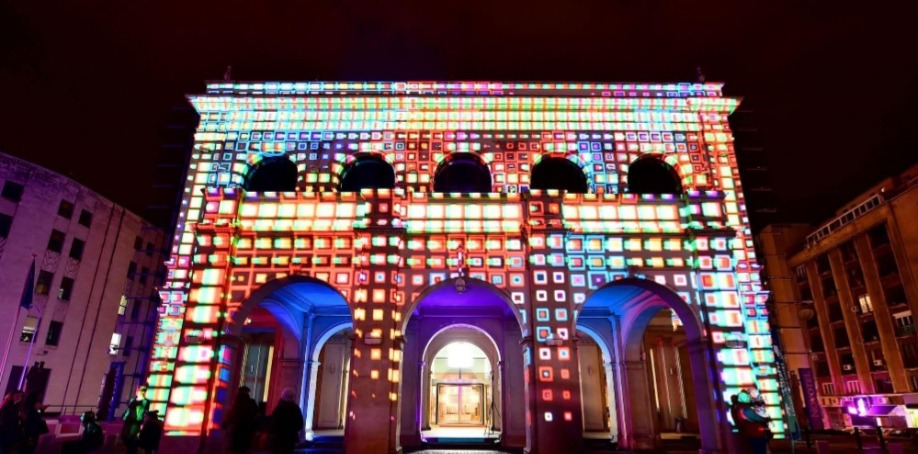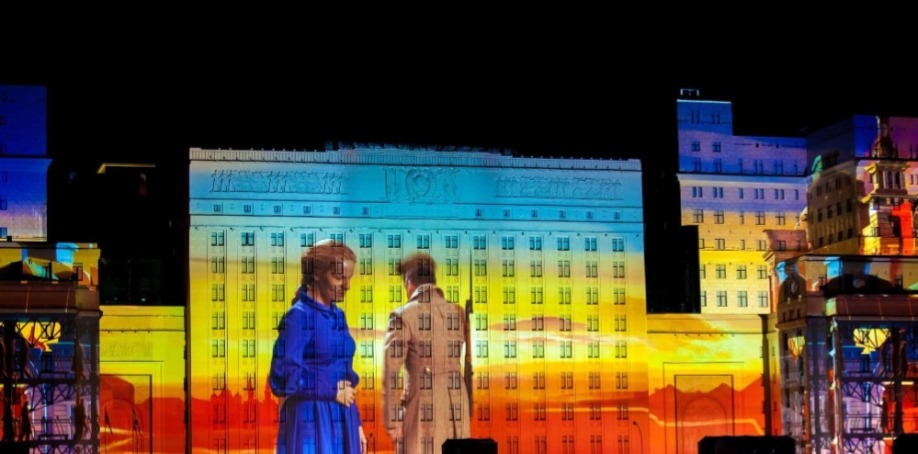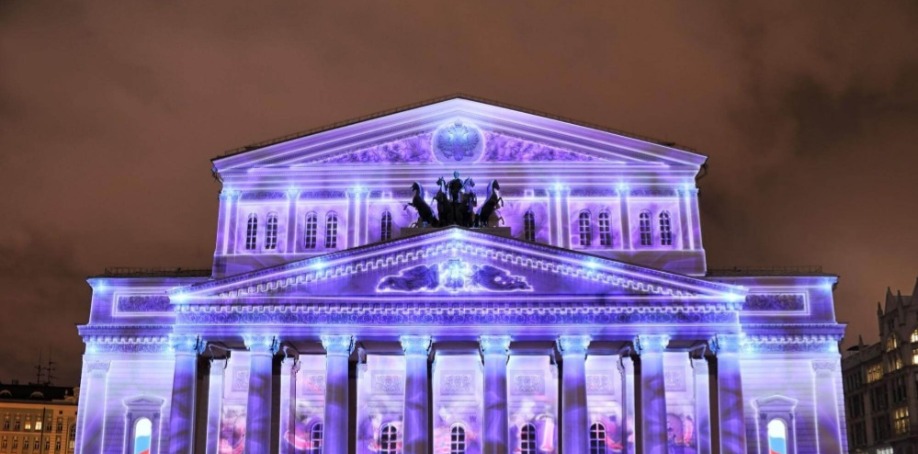
When most people think of projection mapping, they think of major spectacles — buildings transformed into art, colorful musical experiences and larger-than-life exhibits.
While it's true that projection mapping is often used at large events, it can also be harnessed by businesses large and small. How can businesses use projection mapping in realistic and lucrative ways?
Enter: urban projection mapping. Here are a few ways businesses can leverage urban projection mapping to enhance marketing, drive engagement and boost their bottom line.
Potential Uses of Urban Projection Mapping
When considering urban projection mapping, many opportunities abound. As Kevin Holmes writes in Vice, the creative elements of projection mapping allow for a customized, multi-dimensional experience.
“A cousin of augmented reality, it's the projection of 3D motion graphics in real-time onto the surface of a building or structure. The result is the exterior of the building appears to come alive with animated forms, transforming into a dynamic construction.”
He explains how the visual projections are meticulously mapped in order to fit the scale of the building in an appealing way.
Urban projection mapping creates unforgettable experiences at large events, but it can also be used for more practical applications. For example, urban projection mapping often serves the purpose of wayfinding or advertising.
Image Audiovisuals offers additional innovative ideas, such as playing a welcome message on a wall, or highlighting particularly interesting architecture.
This may seem like a less exciting way to utilize projection mapping, but it can still be very effective in catching the eyes of pedestrians who otherwise wouldn't pause to look. Projection mapping differs from other forms of advertising because it doesn't rely on a screen, poster or billboard in order to display its message.
“It's about making any physical object a medium that you can put imagery on,” says Anthony Diehl, owner of Colours & Shapes.

Planning and Implementing Projection Mapping in Cities
How can a company make urban projection mapping work to meet marketing and business objectives?
Contemporary artist Tiffany Carbonneau notes the importance of proper equipment installation and troubleshooting.
“The projector needs to project an image big enough to fill the space wanted. It also needs to be installed in a place (ideally out of audience reach, and not moved before the event), and hooked up to laptop.”
The building itself can also be considered a piece of equipment, as it's a crucial element in executing a successful event.
“The architecture as image medium should offer a matte-finished surface with high reflectance for a good visibility of the projected images,” says architectural lighting expert Thomas Schielke.
He recommends staying away from glass façades because they have a mirroring effect that may make it difficult to see a projected image. Black surfaces are also impractical for projection mapping, as they have a low reflection rate that will also make it harder to see the image.
Some locations are more suited to projection mapping than others. It's a good idea to assess the space well before you intend to set up the projection mapping display so you can plan in advance and make sure everything runs smoothly.
AV Concepts stresses the importance of site visits in evaluating the outcome of a project. “Always conduct site visits and make sure your creative team takes accurate measurements of the entire space, including the architectural elements, to ensure you use it all. Understand the materials, light sources, rigging, building restrictions and the ease of access to determine what will make the most visually stunning projection.”
Finally, Dominion reminds businesses to know their needs and always keep their budget in mind. Working with a professional can help ensure that you work within any time constraints while also considering finances and long-term goals.
Business Benefits of Urban Projection Mapping
Urban projection mapping offers a number of benefits for engaging and captivating target audiences.
“I think there is the opportunity to engage people in stories beyond looking at a building and delve into history and stories and use the format with a little more narrative around histories,” says Pete Lynn at the Technical Direction Company (TDC).
Many businesses are jumping at the opportunity to bring history to life in informative presentations unlike ever before. Turning an entire building into a piece of storytelling is an exciting endeavor, and one that catches attention far beyond what an ordinary display could.
Teecom notes that there are boundless opportunities for businesses of all industries to leverage projection mapping, especially as the technology gets more affordable.
“As the equipment behind it grows less expensive and the technology more accessible, however, projection mapping is experiencing a surprising renaissance, with applications extending into the design phase of architecture.”
Projection mapping can have a place in urban design, even from the stages of planning and construction. As time goes on, we'll likely see buildings created specifically with projection mapping in mind.
Mostly, as Marketing Resource Directory notes, the benefit of projection mapping is the interactivity. “Interactivity is a big influencer because when audiences have a chance to control the content, their experiences are more memorable.”

Projection Mapping in Action
One example of urban projection mapping was created for the game Candy Crush by production company Unit9. This record-breaking production was the largest game ever projected on an architectural surface. It featured 34 projectors that could draw a maximum of 4800W each (the equivalent of 2300 42-inch TVs). The game was live-streamed from a tablet that was on the gaming stage, giving the presenters full control over the image.
For another example, take this special piece by Ula Ula Productions. In celebration of Argentina's bicentenary, they planned a projection mapping experience on the Palacio Barolo building in Buenos Aires. This was the perfect place to celebrate history, as this is one of the capital's most famous buildings, said to be created around the concept of Dante's Divine Comedy.
This designer projected silhouettes of dancing figures onto the building, creating a very atmospheric and mesmerising reminder of the history of the place.
Another example comes from Digital Projection International. Seven of their projectors were used to celebrate the 150th Anniversary of the Albright-Knox Art Gallery in Buffalo, New York. By bathing the museum's exterior in light, they were able to create a one-of-a-kind experience to celebrate such an important milestone.
Projection mapping is an excellent option for museum events, as museum buildings are often unique works of art themselves. The exhibit at the Albright-Knox Museum proves what a great opportunity this can be.
In terms of architecture, even the most uniquely shaped buildings can provide a canvas for projection mapping. Take this example by Urban Screen. Using the iconic Sydney Opera House, they were able to bring the shell roof to life using projection mapping equipment. The illusion turned the roofs into fabric, which appeared to pulse, fold and reveal the rich interior.
This creative use of technology is a perfect example of just how exciting projection mapping can be. Whether used for a simple function or a flashy exhibit, projection mapping is a powerful tool to transform any building.
Images by: radututa/©123RF.com, Alexander Tolstykh/©123RF.com, Artur Lukyanov/©123RF.com


